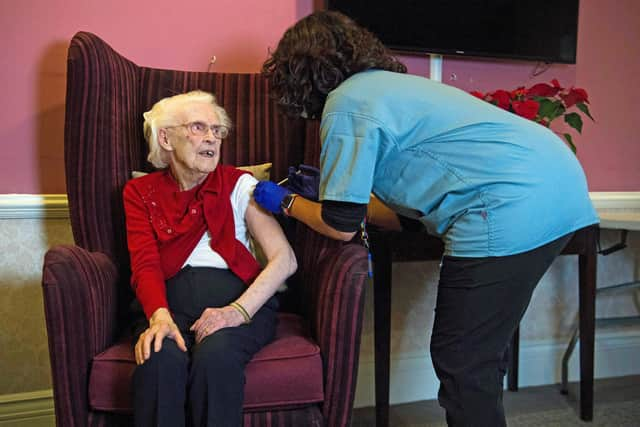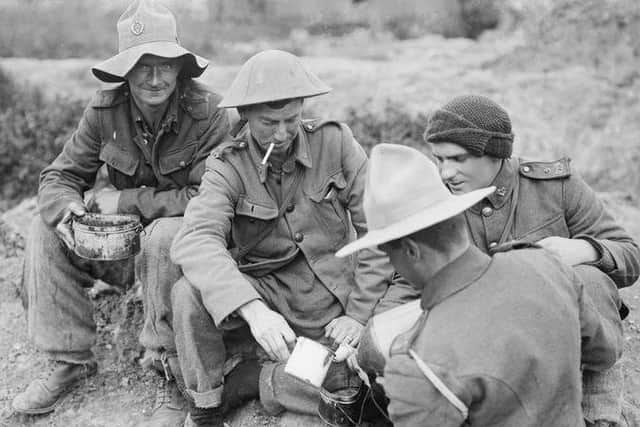Sheffield expert says tragedy of Covid-19 cannot compare with scale of past pandemics
and live on Freeview channel 276
Alongside Prof Cohen’s day-to-day work at Sheffield Children’s, she has supported colleagues across the globe to understand more about Covid-19, sharing news and learning from different areas, including research on past pandemics, to help improve understanding about what is happening today.
On December 1, 2019 a surge in unusual pneumonia cases started in Wuhan, China. This was communicated to the World Health Organisation (WHO) on December 31 and as early as January 7, 2020 the new coronavirus was detected by the Chinese Centre for Disease Control and Prevention (Chinese CDC) in a throat swab from a patient.
Advertisement
Hide AdAdvertisement
Hide AdSARS-Cov2 belongs to the coronaviridae family of viruses that passes from animals to humans. Coronaviridae was first identified in the 1960s. SARS-CoV2 has a 96.2% similar structure to that of the Bat-SARS RaTG13 virus known to infect bats.


Bats, as well as other wild animals are sold for human consumption in the Wuhan markets. It is believed that the Bat Coronavirus developed an evolutionary change becoming able to infect humans directly or through an intermediary such as the pangolin.
On January 23, 2020, the USA reported its first laboratory-confirmed case of Covid-19 in a traveller who had returned from Wuhan. On January 31, the first UK case was diagnosed in York. This reflects that diagnostic tests were available only two weeks after the new virus was detected by the Chinese CDC.
On February 7 the new virus was categorised as Severe Acute Respiratory Syndrome Coronaviruse-2 (SARSCoV-2), which caused the Covid-19 disease. Less than five weeks later, on March 11, the World Health Organisation (WHO) declared the SARS-CoV2 a pandemic. The science moved at an unprecedented speed and in early March 2020, a phase 1 vaccine trial was launched.
Advertisement
Hide AdAdvertisement
Hide AdSoon, more than 180 vaccines were racing through clinical trials, and by December 30 three vaccines (Pfizer -BioNtech, Moderna and Oxford-AstraZeneca) had each shown that there were able to generate immune protection in 70%-95% of volunteers and were considered safe. These were given emergency temporary approval and mass vaccination was rolled out in the UK on January 8.


In the 12-month period since the cases of unusual pneumonia were first communicated to the World Health Organisation, science has learnt not only about the genetic characteristic of the new virus, but also how it spreads and infects, the various clinical presentation and symptoms, predisposing conditions and what treatments can help to save lives.
Ten months after the pandemic was declared, there have been 100 million cases and more than two million deaths worldwide. This is tragic.
Our generation has never before suffered this type of rapidly-evolving situation where previously unseen global challenges have affected health, education, economies and human interaction.
Advertisement
Hide AdAdvertisement
Hide AdDespite this, the current Covid-19 pandemic cannot compare with any previous pandemics experienced by humankind.


Epidemics and pandemics developed more than 10,000 years ago when nomadic populations started to cultivate land. The first recorded pandemics occurred 430 BC in Athens, during the Peloponnesian war.
A century ago, the Spanish Flu spread between 1918 and 1919, infecting 500 million people (one-third of the world’s population), and taking the lives of 50 to 100 million.
There is no certainty where the Spanish Flu started, but as Spain was a neutral country during World War One, news about the rapidly-spreading infection was first published in a newspaper in Madrid in May 1918, hence, the name of ‘Spanish’ flu.


Advertisement
Hide AdAdvertisement
Hide AdWorld War One led to soldier mobilization, overcrowding conditions and poverty, all of which were key elements influencing the rapid spread of the virus. It is estimated that 40% of the soldiers died from Spanish Flu during the war, rather than from the war itself.
In 1918 there were no vaccines, no antibiotics (these were not developed until 1928). There were no ventilators or specific treatments, no medical technology, no intensive care units and no coordinated plans to fight the pandemic. For decades, the 1918 virus was lost to history.
The causative organism – H1N1 virus- was recovered in 1997 from a lung sample obtained from the frozen body of ‘Lucy’, one of many Inuit natives buried in the Alaskan permafrost in Brevig Mission.
This was a small beachside village, where 72 of its 80 adult population succumbed to the deadly Spanish Flu in a short time span between November 15 to 20, 1918.
Advertisement
Hide AdAdvertisement
Hide AdIt took science almost 80 years to identify the virus causing the 1918 pandemic. It was not until August 2005 when the virus was successfully cultured in the laboratory, fully characterising its virulent properties.
There is no doubt that today’s world is much better prepared to fight a pandemic.
However, in order to face those still to come, governments need to invest in public health, innovative research, new technologies applied to medicine, education and social services.
The relevant international organisations should also be ready with a thoughtful plan, without room for improvisation.
Advertisement
Hide AdAdvertisement
Hide AdIn the meantime, there is still a common feature of success that was shared by the London Plague (1665-1666), the Spanish Flu (1918-1919) and the COVID-19 (2020-) pandemics; social distancing, quarantine and hygiene were (and still are) the key elements to reduce the transmission rate.
Until the Covid-19 pandemic comes to an end, the world should slow its pace through the implementation of new creative and adaptive behaviours.
In these confusing and worrying times, local journalism is more vital than ever. Thanks to everyone who helps us ask the questions that matter by taking out a subscription or buying a paper. We stand together. Nancy Fielder, editor